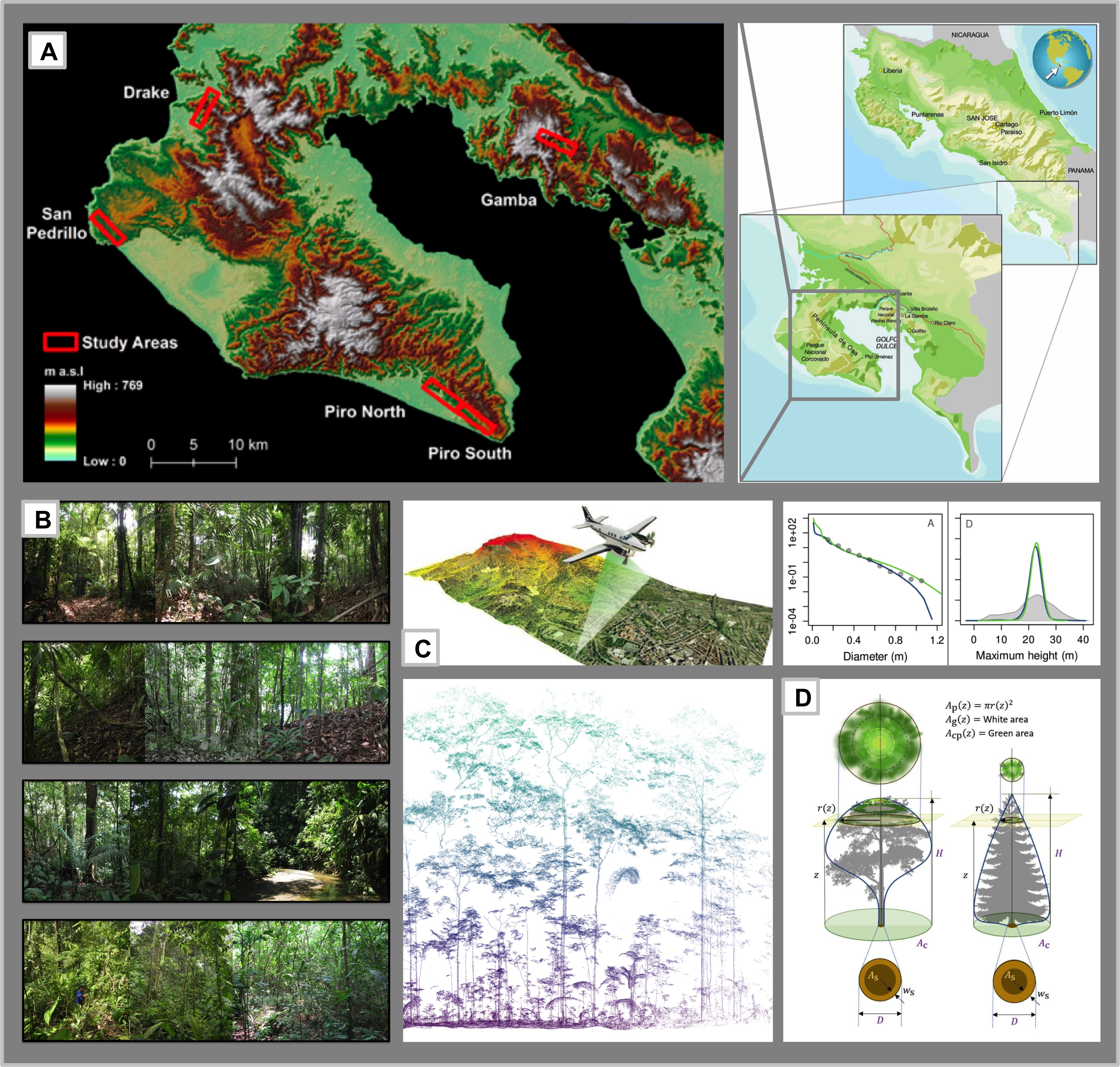2024-10-02, 18:00–18:05 (Europe/Lisbon), Foyer
Tropical vegetation dynamics and ecosystem carbon (C) stocks typically vary with local topography and forest disturbance history. Yet, neither remote sensing nor vegetation modeling captures the underlying mechanistic processes determining ecosystem functioning and therefore the resulting estimates often do not match field observations of vegetation C stocks, especially so in hyperdiverse tropical forest ecosystems. This mismatch is further aggravated by the fact that multiple interacting factors, such as climatic drivers (i.e., temperature, precipitation, climate seasonality), edaphic factors (i.e., soil fertility,
topographic diversity) and diversity-related parameters (i.e., species composition and associated plant functional traits) in concert determine ecosystem functioning and therefore affect tropical forest C sink-strength. Here, we propose a novel framework designed for integrating in-situ observations of local plant species diversity with remotely sensed estimates of plant functional traits, with the goal to deduce parameters for a recently developed trait- and size-structured demographic vegetation model. Plant-FATE (Plant Functional Acclimation and Trait Evolution) captures the acclimation of plastic traits within individual plants in response to the local environment and simulates shifts in species composition through demographic changes between coexisting species, in association with differences in their life-history strategies. Our framework allows to project the functional response of tropical forest ecosystems under present and future climate change scenarios and thus should have crucial implications for assisted restoration and management of tropical plant species threatened by extinction.
Figure legend: [A] Geographic location of the study area and LiDAR transects flown across environmental gradients of the Osa peninsula; [B] Vegetation structure and plant functional diversity observed across permanent monitoring plots; [C] Example for airborne laser scanning (ALS, upper panel) and terrestrial laser scanning (TLS, lower panel) imagery obtained for each transect; [D] Parameters for model simulation of vegetation structure and plant functional diversity.
Further information about this research project can be found here: https://iiasa.ac.at/blog/feb-2024/rainforest-gets-digital-twin
I am a research scholar in the Biodiversity, Ecology, and Conservation (BEC) Research Group of the IIASA Biodiversity and Natural Resources (BNR) Program exploring the relationship between biodiversity and ecosystem functioning with a focus on plant functional traits, life-history theory, and spatial ecology.

